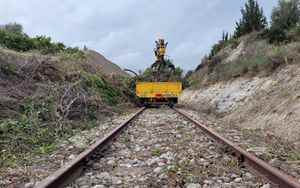(Finance) – Railways of the past, tourism of the future: FS Italiane Foundation kicked off, thanks to funds from Ministry of Culture and through the Italian Railway Network (FS Group), as part of the interventions envisaged by the PNRR, the first preparatory construction sites for the reactivation of historic railway lines for tourist use. Evocative stretches of great scenic appeal will come back to life such as Noto-Pachino and Alcantara-Randazzo in Sicily and Gioia del Colle-Altamura-Rocchetta SAL in Puglia. For travelers it will thus be possible to discover and rediscover panoramic glimpses of the boot that have remained unexplored for years from a train window. With a slow mobility network that will have crossing points between railways, paths and cycle paths, finally allowing the interchange between tourist train, walkers and bicycles.
The lines will be fully recovered using the total 435 million euros allocated by the Ministry of Culture within the chapter Paths in history – Historical trains and cultural itineraries. This is one of the 14 investments that make up the Great Cultural Attractors Strategic Plan, designed to recover, with 1.46 billion euros available, sites and complexes of high historical and architectural value, in a state of neglect or in need of radical actions restoration. An initiative of the MiC which is part of the Complementary Fund to the National Recovery and Resilience Plan and is in full harmony with the development plans of the FS Italiane Group in terms of tourism.
There Noto-Pachino railway, 27.5 km long, was inaugurated in 1935 and suspended from operation on 1 January 1986. It connects the splendid capital of the Baroque, Noto, with Pachino, the southernmost station of the Peninsula, crossing unique places, between the sea and the Mediterranean scrub, skirting the archaeological area of the ancient Greek city of Eloro and the Roman Villa del Tellaro. After Noto Bagni, it crosses the Nature Reserve and Wildlife Oasis of Vendicari, to then touch the territory of the seaside village of Marzamemi. The RFI construction sites dedicated to reclamation and mowing of the railway site, started on 25 January, involved several kilometers of the section, overrun for decades by brambles and waste. An expense of 40 million euros is foreseen for the restoration of the entire route, which will allow the full usability of the section and the restoration of the original station architecture.
Always in Sicily, the Randazzo-Alcantara section, extended for about 37 km, connected the northern slope of Etna with the Ionian coast line Messina-Catania. It branches off from the Alcantara station, still in operation today, and follows the Alcantara river valley, before reaching Randazzo, in a winding and almost entirely uphill path, along which 13 viaducts and eight tunnels meet. Already conceived at the end of the 19th century, but built only between 1928 and 1959, it was interrupted by a lava flow in 1981 and restored in 1983, only to be closed in the early 90s. The line has always been managed economically and locally, without ever being fully utilized. However, its tourist potential is undoubted: the railway line passes a few meters from the famous Alcantara gorges, in the locality of Fondaco Motta, a site of particular environmental value and a destination for important flows of travelers.
In Puglia, the Gioia del Colle-Altamura-Rocchetta Sant’Antonio Lacedonia line was suspended in 2016. The so-called Ferrovia delle Murge was inaugurated between 1891 and 1892 and crosses an area of particular historical and naturalistic importance including the National Park of Alta Murgia, the River Ofanto Regional Natural Park, the Dauno Subappennino and the Vulture Regional Natural Park. The journey by historical train will start from Gioia del Colle, a city of Byzantine origin and theater chosen by Pier Paolo Pasolini to shoot some scenes of the film The Gospel according to Matthew, to reach Altamura, a center known throughout the world for its exquisite bread. The final stop is the Rocchetta Sant’Antonio Lacedonia station, trait d’union between Puglia and Campania, from which another historic railway departs, the one that crosses the whole of Irpinia and reaches Avellino, Benevento and Naples.
The goal, as stated by the Minister of Culture Dario Franceschini, is to increase a new form of railway tourism that makes it possible to reach lesser-known destinations in the beautiful country, seasonally adjust the flows and discover the beauty of the Italian territories, in particular those of the province and inland areas. Unique in the world of art, landscapes and food and wine.
